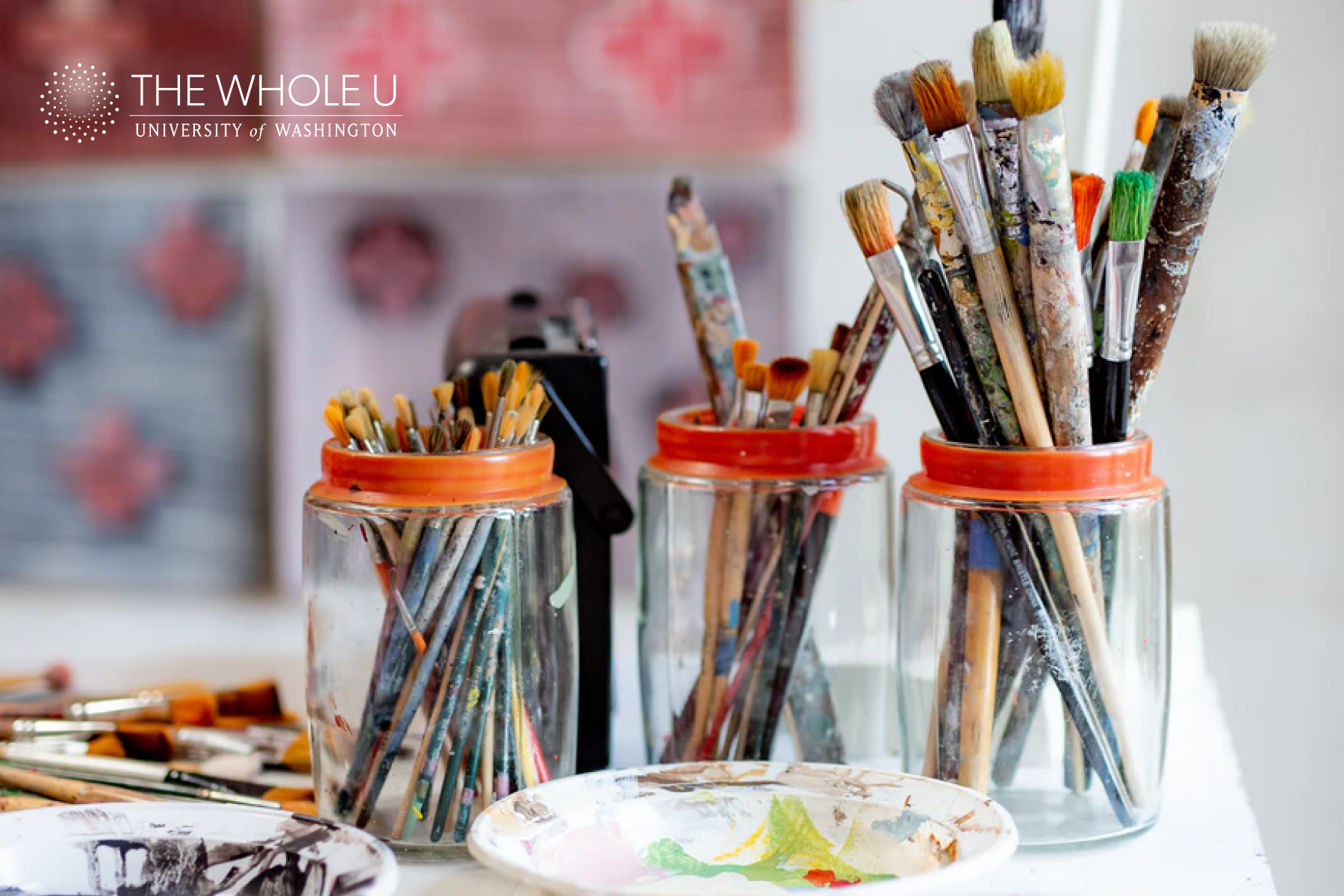
Art for Self-Care and Mental Health
Think of something creative that you enjoy doing. Perhaps it’s dance, painting, or creating music. How do you feel when you are creating art? Some would say calm, happy, relaxed, or inspired. Art has an incredible way of connecting the world and allowing us to express ourselves. Because of these feel-good effects, art is a powerful tool for self-care and mental health.
Studies have shown that expression through art can help people with depression, anxiety, and stress. Art has also been linked to improved memory, reasoning, and resilience in aging adults.
We’re diving into the powerful impact art can have on your life. The best part is, art is something everyone can participate in. It does not prescribe to any particular set of norms and is unique to each and every one of us. So why not give it a try? It may be the best trick for health yet!
Benefits of Art for Mental Health
Stress Relief
Stress is proven to be detrimental for our physical and mental health. One of the best ways to combat stress, is to make art! Study after study has shown that drawing, doodling, coloring, and simply creating something for 20 plus minutes reduces cortisol. The best part is that previous art experience is not required to reap these benefits.
Boosts Self-Esteem
The consistent practice of art can build a sense of accomplishment for all ages in just 45 minutes. Creativity makes us feel good about ourselves. It validates our unique ideas and our ability to turn ideas into something physical. Taking time for your hobbies and crafts often provides a sense of self-worth and confidence in our abilities. So knit that sweater and play that piano!
Healing
Healing from trauma is a complicated process and there are many practices that can help facilitate this process. Research has proved that art can help process pain and provide a direct connection between the mind and body to help with the healing process.
Expressive Therapy
Expressive arts, such as visual arts, movement, drama, music, and writing, foster deep personal growth and community development. Expressive art therapy allows users to laugh, let go, and relax, which helps decrease depression, anxiety, and stress.
Ways to Practice Self-Care through Art
Use Art as a Release
A common exercise to utilize art for release is to first represent things you want to let go of as words, drawings, colors, or images on a blank canvas. Then you can burn it, rip it up, cover it up with something new that inspires you, throw it away, put it in water, or destroy it in any way you please.
Respond through Art
In the same way that releasing through art can help us overcome difficulties, it can also be used to cope with pain and negative feelings. Some examples include writing to a loved one that hurt you or taking photos of a place that used to hold meaning to you. It is also helpful to find a piece of art you connect with such as music, writing, or a painting, and to then utilize this inspiration to create something of your own as an emotional response. Understanding what you are trying to capture through this piece and breaking down how it makes you feel can be beneficial to this analysis.
Mindful Creativity
Art doesn’t require thought, it can be a free-flowing creative process. To practice mindful art, you can simply start creating or choose a piece of art as inspiration for your own creation. Block out the other thoughts and distractions in your life and give yourself a set amount of time to make art or enjoy it.
Collage your Thoughts or Visions
Some people find it difficult or don’t enjoy the practice of drawing, painting, or writing but there are endless ways to practice art. You can create a collage that expresses what you’re feeling about a specific situation to process your emotions and thoughts. You may also collage a vision board to focus on the future and use photos that excite you. All you need are some magazines, newspapers, or old images around your house.
Color a Feeling Wheel
Leah Guzman is an art therapist who wrote a book on further practices in essential art therapy, and an exercise she champions is to develop a color feeling wheel to deal with emotions. It starts by drawing a circle then dividing it into eighths and writing one emotion in each section, then pick a color that represents that feeling and color the section in. Afterwards, pay attention to which emotions were associated with which colors, the feelings you wrote first, and how this is applicable to your everyday life.
Other Practices of Art
The benefits of art are extended across any medium that excites you. Consider trying different forms of art and tapping into your creative mind along the way. Here’s a list of other popular art forms to explore:
- Doodling or scribbling
- Coloring
- Writing
- Photography
- Sculpting
- Playing an instrument
- Dancing
- Fashion
- Needlework crafts
- Jewelry making
Are you an artist or creative? Share with us in the comments below what creative art forms bring you peace and joy!
One Thought on “Art for Self-Care and Mental Health”
On April 12, 2022 at 3:13 AM, Jennifer MacIsaac said:
I absolutely love art as a form if self care. I love to explore the process of creating. I have spent the past several years exploring this idea and teaching it to others in my community. I enjoy blending written reflections with visual reflections in the form of art journaling. It is an important part of my self-care practice. I love many mediums but lately I have been drawn to watercolor. I also work a lot with collage and mixed. media
Comments are closed.